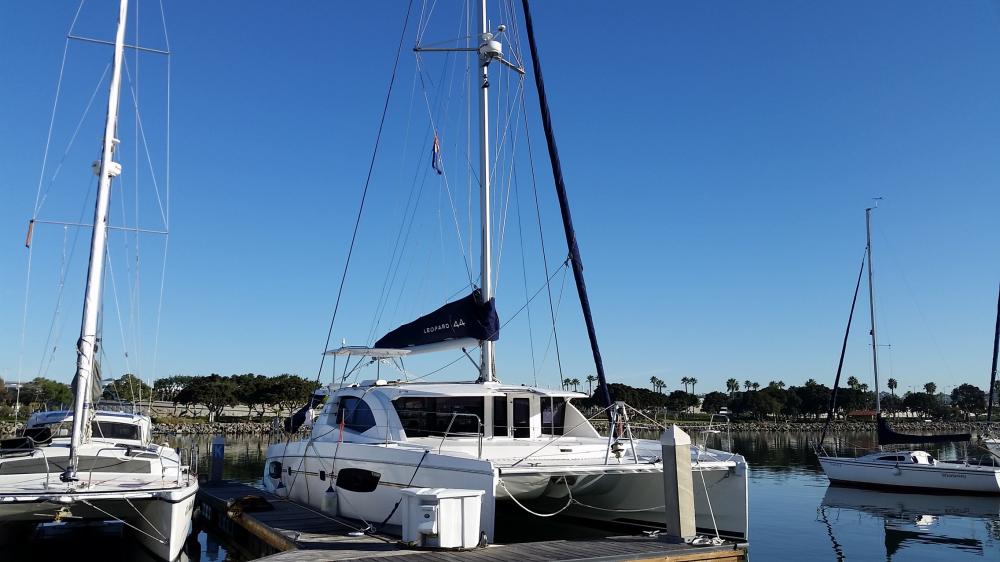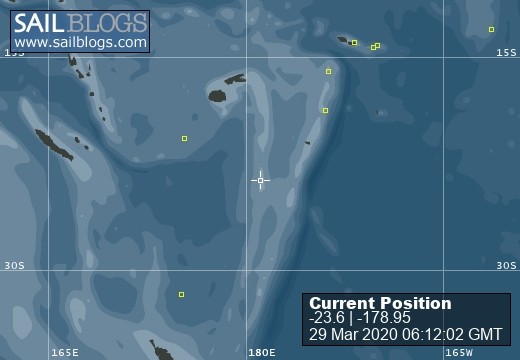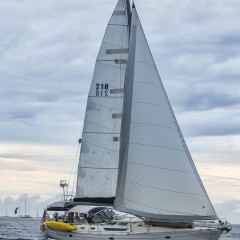
Pacific Adventures on WheytoGo
Our magical sailing experience has begun....
08 November 2019
31 October 2019
31 October 2019
31 October 2019
31 October 2019
31 October 2019
21 October 2019
18 October 2019
18 October 2019
18 October 2019
18 October 2019
18 October 2019
18 October 2019
18 October 2019 | Neiafu, Tonga
Exploring the island of Upolo phase 2
04 June 2019 | Upolo Island, Western Samoa
Ian Steele
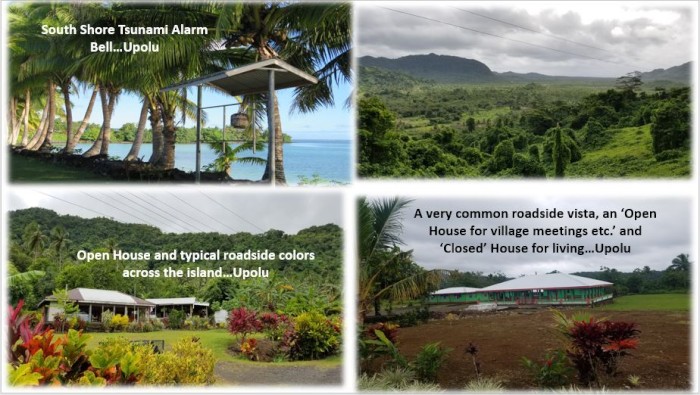
Another road trip, this time heading east from the Apia marina, then back around to the south shore. The island is tightly ringed with dense coral reefs and no easily identifiable pass-throughs to allow safe anchorages near shore, so we did not attempt to sail around the island for our explorations.
As we drove through the villages, each owned by individual families similar to Pago Pago in American Samoa, we were struck by the tight knit village communities, each with their own schools and churches, often 3-4 different denominations within a single-extended family village, some with small cathedrals. There are over 300 individual family villages on Upolu and Savaii combined. Most were proudly decorated with colored flags extending on both sides of the main village road, each village with its own unique design and colors. This was done in honor and celebration of the upcoming Pacific Games 2019 which will be held here in July.
While the Samoans were definitely influenced by the European occupation, they still hold fast to their 3000-year-old cultural practices and traditions. Fa’a Samoa is a proud way of life for the Samoan people, to celebrate and honor traditional cultural customs and values. Fa’a Samoa has 3 key structural elements-the matai (chiefs), aiga (extended family), and the church. There are over 18,000 chiefs who hold complex family, civic and political duties in the village. If the family members marry partners in other villages, the in-laws become part of the extended family. It is the duty of a Samoan to be of service to the aiga for life. Christianity is one of the few western influences deeply accepted into Samoa since its introduction by British missionaries in 1830. Sundays are a day of worship and family time, with no physical work done. Additionally, tourists are expected to refrain from work and play at these times in the villages. We also learned that there are religious curfews in the evenings in many villages, where tourists and visitors are not allowed to be present for ~1 ½ hours during the prayer time period, discovering this as Ian and I took a sunset walk by the waterfront in a village and were (very politely) turned away.
The structure of the village homes was quite interesting. The homes are clustered together in a random fashion, consisting of a large “open house” which resembles a covered park pavilion, with a smaller “closed house” beside or behind the open house, used as the primary living space. The open house is used for meetings, village gatherings, however, it appeared as though the open house was often used as the primary living space, with furniture and cooking spaces visible, presumably to better tolerate the tropical heat. Shades, tarps, or palm branches were placed during rain showers. Often the roadsides of individual villages would be planted with colorful hedges of tropical flowers, extending the length of the village road. If you want to swim in the ocean within a given village, you are expected to ask permission & pay a small Tala fee.
As we drove deeper into the center of the island, we passed beautiful emerald green rainforests and groves of banana, breadfruit and coconut palms, as well as massive Taro fields. [Taro being one of the islands major exports along with coconuts].
One highlight of our cross -island adventures was the visit to the ionic Sua Ocean Trench area comprised of tropical gardens, day fales and south coastal views of blowholes, sea arches and rock pools. This attraction featured a unique land formation consisting of two giant holes set amongst the clifftop gardens about 30 meters below ground level, joined by an ancient lava tube cave extending out to the open ocean .One of the holes was filled with warm turquoise ocean water forming an inviting clear blue -green swimming hole accessed by a very long and steep ladder. Of course, our adventure team climbed down and enjoyed a late afternoon swim in the clear turquoise waters seeping in from the ocean thru the lava tubes. Whilst tempting, we didn’t take the underwater cave swim to the open ocean!
Returning to Apia we stopped at the ferry terminal park to enjoy our ‘customary’ afternoon glass of red wine whilst familiarizing ourselves with the ferry terminal in preparation for our next 2 day team adventure – to the island of Savai’i.
As we drove through the villages, each owned by individual families similar to Pago Pago in American Samoa, we were struck by the tight knit village communities, each with their own schools and churches, often 3-4 different denominations within a single-extended family village, some with small cathedrals. There are over 300 individual family villages on Upolu and Savaii combined. Most were proudly decorated with colored flags extending on both sides of the main village road, each village with its own unique design and colors. This was done in honor and celebration of the upcoming Pacific Games 2019 which will be held here in July.
While the Samoans were definitely influenced by the European occupation, they still hold fast to their 3000-year-old cultural practices and traditions. Fa’a Samoa is a proud way of life for the Samoan people, to celebrate and honor traditional cultural customs and values. Fa’a Samoa has 3 key structural elements-the matai (chiefs), aiga (extended family), and the church. There are over 18,000 chiefs who hold complex family, civic and political duties in the village. If the family members marry partners in other villages, the in-laws become part of the extended family. It is the duty of a Samoan to be of service to the aiga for life. Christianity is one of the few western influences deeply accepted into Samoa since its introduction by British missionaries in 1830. Sundays are a day of worship and family time, with no physical work done. Additionally, tourists are expected to refrain from work and play at these times in the villages. We also learned that there are religious curfews in the evenings in many villages, where tourists and visitors are not allowed to be present for ~1 ½ hours during the prayer time period, discovering this as Ian and I took a sunset walk by the waterfront in a village and were (very politely) turned away.
The structure of the village homes was quite interesting. The homes are clustered together in a random fashion, consisting of a large “open house” which resembles a covered park pavilion, with a smaller “closed house” beside or behind the open house, used as the primary living space. The open house is used for meetings, village gatherings, however, it appeared as though the open house was often used as the primary living space, with furniture and cooking spaces visible, presumably to better tolerate the tropical heat. Shades, tarps, or palm branches were placed during rain showers. Often the roadsides of individual villages would be planted with colorful hedges of tropical flowers, extending the length of the village road. If you want to swim in the ocean within a given village, you are expected to ask permission & pay a small Tala fee.
As we drove deeper into the center of the island, we passed beautiful emerald green rainforests and groves of banana, breadfruit and coconut palms, as well as massive Taro fields. [Taro being one of the islands major exports along with coconuts].
One highlight of our cross -island adventures was the visit to the ionic Sua Ocean Trench area comprised of tropical gardens, day fales and south coastal views of blowholes, sea arches and rock pools. This attraction featured a unique land formation consisting of two giant holes set amongst the clifftop gardens about 30 meters below ground level, joined by an ancient lava tube cave extending out to the open ocean .One of the holes was filled with warm turquoise ocean water forming an inviting clear blue -green swimming hole accessed by a very long and steep ladder. Of course, our adventure team climbed down and enjoyed a late afternoon swim in the clear turquoise waters seeping in from the ocean thru the lava tubes. Whilst tempting, we didn’t take the underwater cave swim to the open ocean!
Returning to Apia we stopped at the ferry terminal park to enjoy our ‘customary’ afternoon glass of red wine whilst familiarizing ourselves with the ferry terminal in preparation for our next 2 day team adventure – to the island of Savai’i.
Comments
| Vessel Name: | Wheytogo |
| Vessel Make/Model: | Leopard 44 Catamaran |
| Hailing Port: | Austin Texas USA |
| Crew: | Ian Steele & Sharon Lockhart |
| Extra: | MMSI 367701140 WDI 4695 Contact email: wheytogo44@gmail.com |
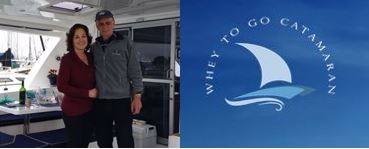
Who: Ian Steele & Sharon Lockhart
Port: Austin Texas USA
Current Position
Favorite Links
No Links Added Yet
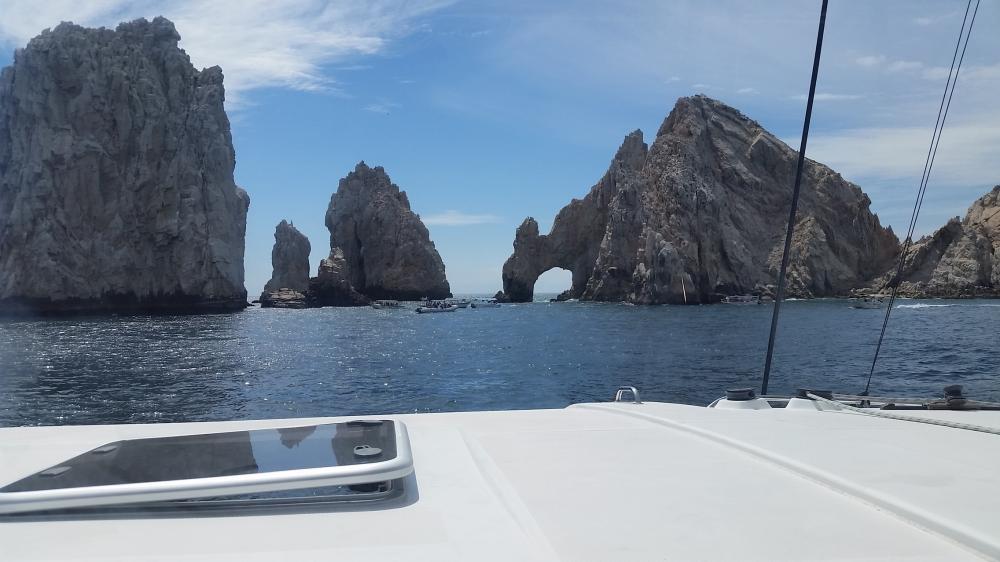
.jpg)
